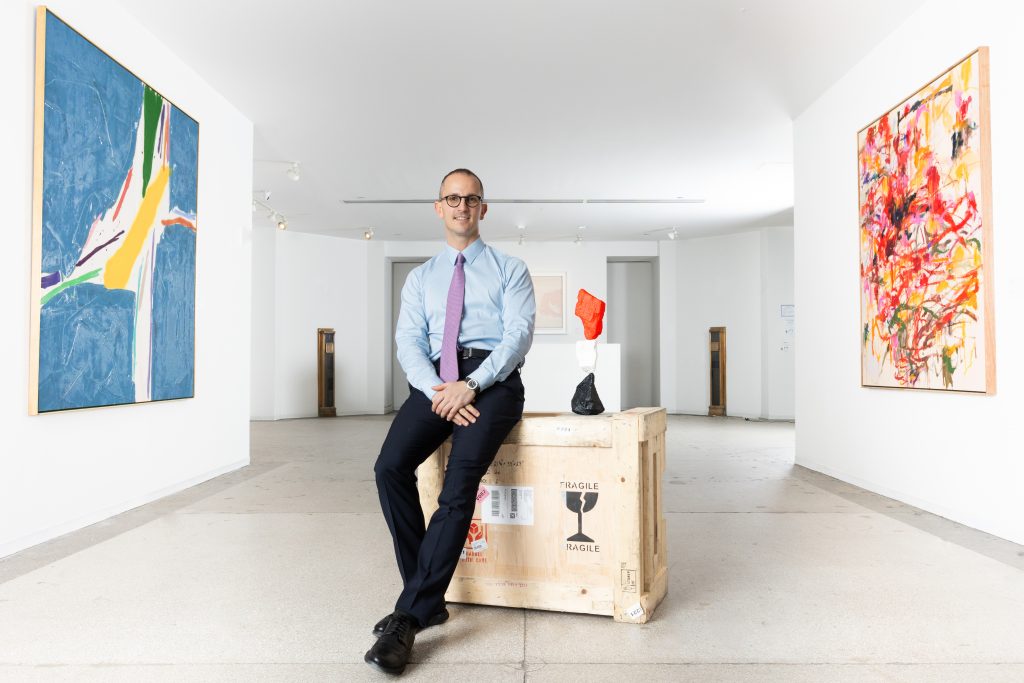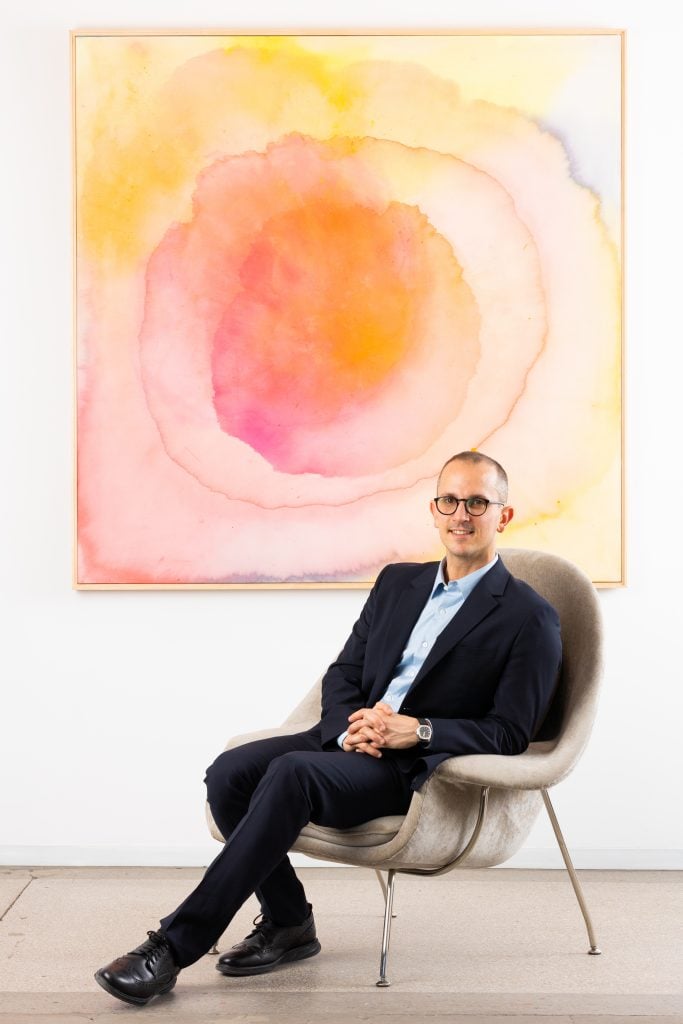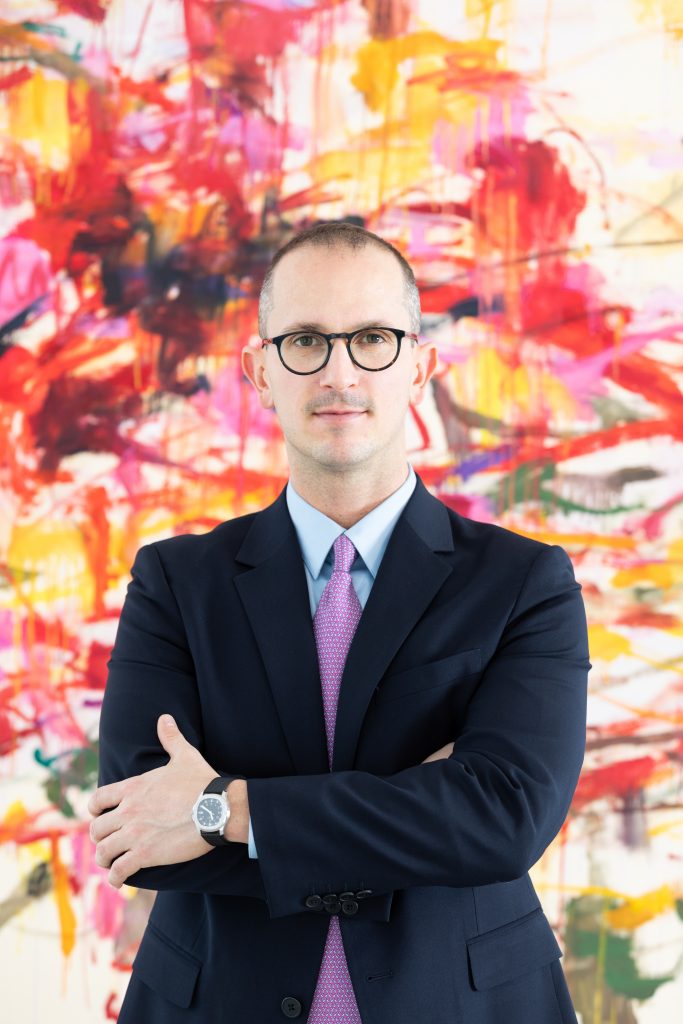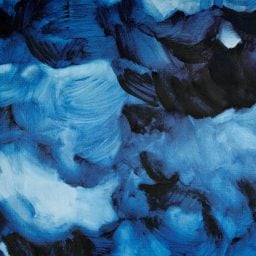Artnet’s third auction dedicated to Abstract Expressionism and Color Field painting is now live. Curated by Dakota Sica, the sale features vivid paintings and works on paper from the post-war period, including monumental works by names like Friedel Dzubas and Vivian Springford, who have been historically overlooked by the movement.
As well as a post-war connoisseur and avid art collector, Dakota Sica is a partner at New York’s Leslie Feely Gallery, where he works extensively with Color Field painting and Abstract Expressionism. Additionally, Sica founded the Java Project, a Brooklyn-based space where he supports and champions the careers of young and emerging artists.
To mark the opening of Gems: Collecting Post-War Abstraction, we spoke to Sica about his career and his work on the sale.
As partner at Leslie Feely Gallery and founder of the Java Project, what have been some of your career highlights so far?
Every day is a highlight—I am grateful to be able to work with artists, collectors, estates, auctions houses, shippers, conservators, museums, art handlers, historians, and other arts professionals. It is truly an art ecosystem, and being in the field has led me to meet some of the most interesting people. For that, I am very appreciative, and it speaks to the power of art to bring so many different types of people together over one shared love.
The industry is beginning to reevaluate art historical narratives and shed new light on overlooked artists. Do you see this happening in relation to the Color Field and Abstract Expressionist movements?
In many cases, talented artists were overlooked for their gender, race, education, or other varying factors. Curators, dealers, and collectors are actively reevaluating the art-historical canon. From a market perspective, I often see collectors on the front lines of these efforts. They scour books and archives to figure out who was on the scene making good works, and the reasons why they were not shown and collected in their time. They seek out these artists at auction and it only takes a few sales before the word is out.
However, even though we are seeing higher prices be achieved for some previously overlooked artists, the gap is still large. This gap is an opportunity for strong-willed collectors to buy masterpieces of a given artist at a fraction of their future price.

Dakota Sica. Photo: Lucas Hoeffel Photography.
There are several contemporary artists featured in the Gems: Collecting Post-War Abstraction sale. How do you see the legacy of Abstract Expressionism and Color Field painting in these artists’ practices today?
Artists often build on the visual language of the past. In a sense, it is important for contemporary artists to know the history of art in order to break it. This fracturing and rebuilding creates the kaleidoscopic lens at which we view art. When I visit the studios of living artists, I often see images of iconic historic works pinned on their walls—they use these past pieces as inspiration and jumping off points in their own practices.
It’s helpful to remember all art was contemporary in its time. Featuring contemporary artists alongside their artistic predecessors within this sale results in an even more engaging conversation.
This is the third edition of the Gems sale. Since the first one in January 2022, have you seen any changes in the post-war and contemporary art market?
In just a year, the market has gone through a lot of changes. We have seen a sobering in the emerging market and a doubling down by collectors on blue chip postwar works. Quality seems to prevail and big prices are dependent mainly on supply—when masterpieces appear for sale there is no shortage of buyers, while average works languish. This demonstrates a sharpening of the market where collectors are becoming more discerning—they will not buy just any piece by said-named-artist but rather the right work, from the right period, at the right price.

Dakota Sica with Vivian Springford, Yellow & Rose (1976). Photo: Lucas Hoeffel Photography.
Tell us more about your process of curating these sales.
Auctions are very creative for me. I think about curating Gems the same way I would think about mounting an exhibition at the gallery; I am trying to tell a story—a story about a place, about a group of artists, about a time in history, about a feeling. Often this process starts off with an artist I am interested in and grows from there. I sometimes discover artists through my client’s collections; I am always inspired by visiting their homes and getting introduced to, and educated about, new artists that were not previously in my sphere. True collectors’ works are often a reflection of themselves.
This sale has been curated with that same mindset: all of the pieces work cohesively as a whole, yet all of their parts are equally as impressive when regarded as standalone artworks.
What are your personal highlights in the Gems sale? If you could add one work to your collection, what would it be?
Each work has been hand selected for the sale—with that said, one of my personal favorites is Vivian Springford’s Yellow & Rose (1976) this canvas is a quintessential example of her highly sought-after poured paintings. Similar to the technique of Helen Frankenthaler, Springford watered down acrylic paint and poured it directly onto unprimed canvas. The resulting compositions invoke feelings of nature and the cosmos. This work is especially illuminating, and the painting is conservatively estimated at $125,000 to $150,000.
Another favorite is Kikuo Saito’s Setta (2014) These late paintings are few and far between. Often, artists make some of their best work at the beginning of their careers, but in Saito’s case I think the opposite was true. Perhaps he knew time was limited—in the final years of his life, he created some of the most powerful paintings of his career, the present work being a crescendo of his accomplishments as a painter. This work is estimated at $60,000 to $80,000, and I anticipate competitive bidding.
Last but not least is Friedel Dzubas’s Extravaganza (1989)—I am very happy to include this painting in the sale. The work is from the last part of Dzubas’s oeuvre, which represents a culmination of his physiologically fractured works from the 1970s. Dzubas was fearless by always reinventing himself—this painting embodies that exploration. The present work is estimated at $75,000 to $100,000, which is very reasonable compared to recent auction results.
Gems: Collecting Post-War Abstraction is live now through February 28, 2023.











